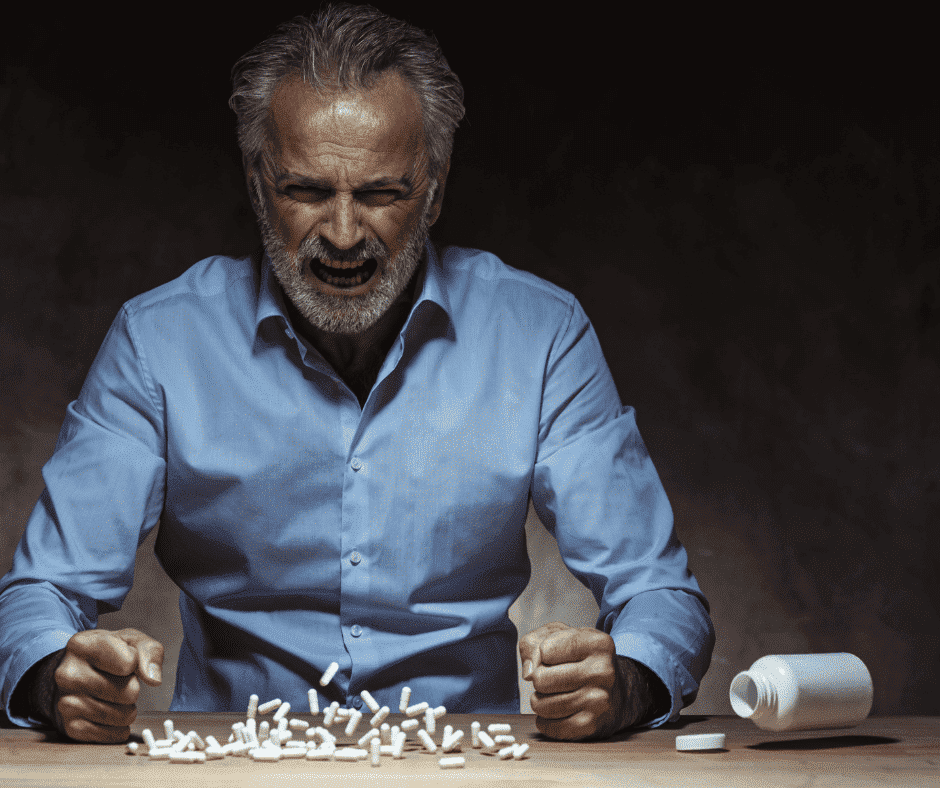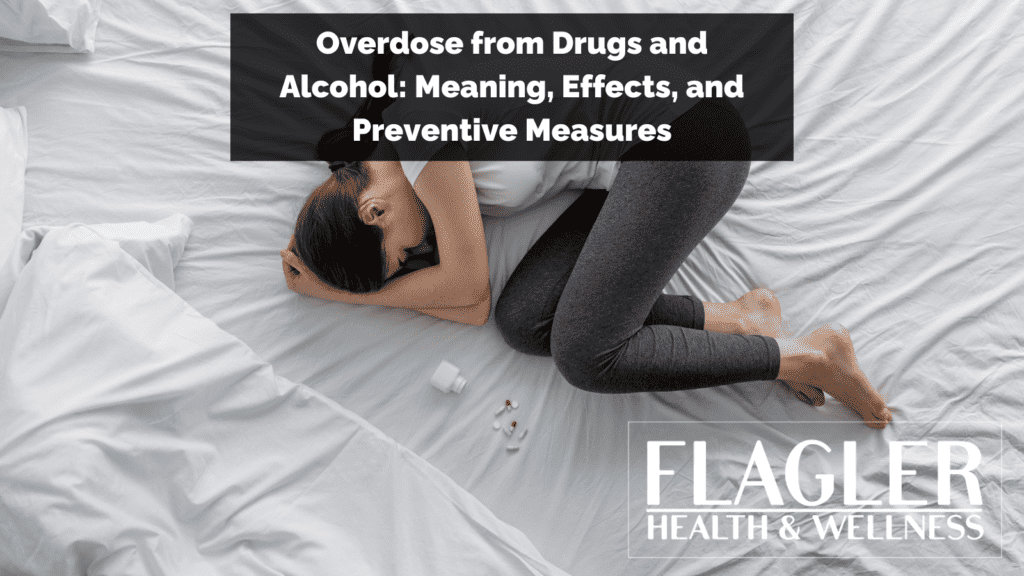Key Takeaway:
- Substance abuse can take on various forms, including prescription drug abuse, alcoholism, and illicit drugs, and can have severe physical and psychological effects on the individual.
- The chronic abuse of substances can damage internal organs like the liver, heart, and lungs, while also causing chronic pain and altering brain chemistry, leading to symptoms of anxiety, depression, and psychosis.
- Treatment for substance abuse can take multiple forms, including cognitive-behavioral therapy and medicinal options, although prevention measures like education, support groups, and healthy coping strategies can also be effective in combating substance abuse.
Understanding Substance Use Disorder And It’s Side Effects
Substance Use Disorder (SUD), commonly known as addiction, can have grave physical, psychological, and social implications. These negative side effects extend beyond the individual, affecting families, relationships, and communities.
An in-depth understanding of these ramifications can foster empathy and provide the impetus for intervention, treatment, and support.
Our areas of focus will include:
- The physical health repercussions of addiction, such as the deterioration of bodily functions, diseases, and overdose risks.
- The psychological and mental health consequences, including increased risk of mental disorders, cognitive impairments, and emotional instability.
- The impact of SUD on personal relationships, including strain and breakdown of familial and social connections.
- The societal and economic consequences of addiction, such as lost productivity, increased healthcare costs, and crime.
- The role of stigma in exacerbating the negative effects of addiction, hindering recovery efforts, and shaping social attitudes.
Substance Abuse Defined
Substance use disorder, also known as substance abuse or drug and alcohol addiction is a severe and chronic illness that has plagued our society for ages.
Substance use disorder (SUD) is a treatable mental disorder that affects a person’s brain and behavior, leading to their inability to control their use of substances like legal or illegal drugs, alcohol, or medications. Symptoms can be moderate to severe, with addiction being the most severe form of SUD.
NIMH
Drug addiction involves the habitual use of drugs or alcohol in excessive amounts, leading to negative consequences both physically and mentally. Substance abuse can be detrimental not only to the individual who indulges but also to their immediate family members and friends.
The definition of substance abuse is broad, encompassing a range of substances from illegal drugs such as cocaine and heroin to legal ones like alcohol and prescription medications when used improperly or without a prescription.
The reason behind the way these substances work lies in their ability to alter the brain’s normal functioning, making it more difficult to control one’s impulses. As users become addicted, they require higher doses and longer lengths of time for their high.
Interestingly, substance abuse does not merely impact the user’s mind but also affects other parts of their body such as organs like the liver, kidney, heart, and intestines contributing heavily towards diseases in these organs. This can lead to chronic diseases like cirrhosis or hepatitis C.
In addition, substance abuse can directly contribute to suicidal thoughts and depression in individuals.
According to the National Institute on Drug Abuse (NIDA), about one in ten Americans over age 12 have partaken in drug usage at some point in their life, making it exceedingly clear that substance abuse truly affects people from all walks of life.
With numerous high-profile cases across many media channels every day related significantly related with this topic; no one remains unaware of its existence today.
A survey conducted by NIDA showed that approximately 21 million Americans ages 12 and older had some form of substance addiction back in 2015 itself – thus revealing how widespread this issue has become for people living within different social situations around us.
Different Forms of Substance Abuse
Different forms of substance abuse refer to the various ways in which people misuse drugs and harmful substances. Individuals engage in substance abuse for different reasons, which could be due to mental health disorders, social pressures, peer influence, and addiction.
Substance abuse involves the excessive consumption of illicit drugs or prescription medication beyond what the doctor prescribed.
Different forms of substance abuse include alcoholism, drug addiction, prescription drug abuse, and inhalant use. Alcoholism is a form of substance abuse where an individual consumes alcoholic beverages excessively over a long period leading to physical dependence.
Drug addiction is a situation where an individual develops a craving for illicit drugs leading to uncontrollable behavior when trying to feed that addiction.
Prescription drug abuse involves taking prescription drugs not as per doctors’ orders or taking more than the doctors prescribe.
Inhalant use is another form of substance abuse where individuals inhale chemicals from aerosol cans, glue or gasoline fumes that can cause hallucinations or give a sense of euphoria. Inhalants can result in serious health problems such as seizures and even sudden death.
Comprehensive Look at Physical Side Effects
There are various and broad negative physical effects that occur from continued and prolonged consumption of mood and mind altering substances, which vary based on the type of drug being ingested, the frequency of use as well as the amount of use.
The phsyical effects of addiction include immediate risks like overdosing along with several other long-term consequences that can damage the body.
Some of the physical effects of substance use disorder include impacted brain function, damage to internal organs as well as altered eating and sleeping habits.
It’s also important to note that different substances have different side effects. For instance, the effects of prolonged use have different impacts on phsyical health including:
- side effects of opioid addiction
- side effects of drug addiction
- side effects of alcohol addiction
- side effects of meth addiction
- side effects of inhalant addiction
- side effects of benzodiazepine addiction
The Impact of Substance Abuse on the Brain
The Impact of Substance Abuse on the Brain cannot be overstated. It is perhaps one of the most harrowing effects of substance abuse, and it is crucial to understand why this happens.
When we consume drugs or alcohol, they interact with our brain cells, which are called neurons. They change how neurons communicate with each other by either enhancing or inhibiting their action.
For instance, a drug like cocaine enhances the activity of dopamine, a neurotransmitter that produces feelings of pleasure and reward. This results in an intense ‘high’ that can become addictive quickly.
Moreover, chronic substance use can lead to changes in brain structures that affect memory, decision-making abilities, and impulse control. These changes may be irreversible even after long-term abstinence from the drug.
Studies have shown that individuals who struggle with addiction have a smaller prefrontal cortex, the part of the brain responsible for decision-making and problem-solving skills.
Interestingly, our brains have a way of adapting to new experiences over time in a process called neuroplasticity. However, when someone abuses drugs or alcohol repeatedly for an extended period, their neural connections are altered permanently leading to addiction.
Damage to Internal Organs
Internal organs are an essential part of our body that plays an important role in keeping us healthy. However, substance abuse can cause damage to internal organs and lead to severe health problems.
The damage caused to internal organs is a result of the substances that the body ingests. When we consume drugs or alcohol, they travel through the bloodstream and reach our internal organs. These substances affect the functioning of organs and eventually damage them.
The reasons behind the working of these substances are varied. Certain drugs like opioids, for instance, decrease the heart rate leading to reduced blood flow to various organs.
On the other hand, stimulants like cocaine increase heart rate leading to decreased oxygen supply. Alcohol also affects liver function leading to other complications.
Chronic Pain and Substance Abuse
Chronic pain and substance abuse are two interconnected issues that often go hand in hand, with one leading to the other.
When an individual suffers from chronic pain, whether due to a medical condition or injury, they may turn to substances like painkillers or alcohol to alleviate their discomfort. However, over time, this can lead to addiction and substance abuse.
The cycle of chronic pain and substance abuse begins when an individual experiences intense physical pain that they cannot manage without medication.
Opioid painkillers are often prescribed for moderate to severe chronic pain as they work by blocking the brain’s receptors that transmit pain signals.
However, these drugs also trigger the release of dopamine, a neurotransmitter associated with feelings of pleasure and reward. The more a person takes these drugs, the more dopamine is released, creating a cycle of dependency.
Chronic pain and substance abuse also have psychological components that contribute to addiction. Individuals who suffer from chronic pain may experience depression, anxiety or other mood disorders related to their conditions which fuels their desire for relief through substances.
Additionally, long-term use of opioids reduces levels of serotonin in the brain which is associated with happiness causing individuals who take these drugs more susceptible to depression.
Furthermore, there is evidence that suggests people experiencing social isolation are at greater risk for developing drug addictions due to difficulty finding ways to cope with stressors like chronic pain.
To avoid falling into this trap it is important for society as we know it to prioritize physical therapy programs instead of prescription medications alone thus providing support groups and social interactions necessary in fighting isolation.
In-Depth Look at Psychological Effects

In this section, we’ll delve into a more in-depth look at the psychological effects, specifically focusing on anxiety, depression, and psychosis.
By understanding the complex link between these mental health conditions and substance abuse, we can gain a better understanding of the far-reaching impact of addiction and inpatient rehab. Join me as we explore the latest research on this important topic.
Understanding Anxiety and Substance Abuse
As human beings, we all experience various emotions that lead us to behave in specific ways; fear, sadness, joy, anger, and anxiety are examples of these. Among the many triggers for substance abuse, anxiety ranks high up there with depression.
Understanding Anxiety and Substance Abuse is therefore paramount. When people experience anxiety, they may find themselves experiencing a sudden increase in heart rate, breathing changes, or maybe even feeling panicked with thoughts racing through their minds.
Anxiety is a biological response that triggers one’s “fight or flight” mode that alerts the individual of potential dangers when they perceive any threat. In most cases today, the threat is not life-threatening but instead comes in different forms such as getting an “F” grade despite working hard academically or going for an interview for a job application.
People turn to drugs such as marijuana or prescription pills which help them calm down and manage their anxiety levels based on how those drugs work: producing temporary happiness by altering chemical balances in the brain.
The phenomenon of Understanding Anxiety and Substance Abuse can be explained by psychological conditions associated with failure and other maladaptive behaviors that one has learned perhaps over time from internalization due to negative reinforcement like bullying or family issues. The results are faulty beliefs about oneself like: “I am not good enough,” “I cannot make it”, etc.
According to the Anxiety and Depression Association of America (ADAA), almost 20% of individuals diagnosed with any form of anxiety disorder also struggle with substance abuse disorders.
A staggering statistic from the National Institute on Drug Abuse (NIDA) states that over 50 percent of people who abuse illicit drugs have other co-occurring mental health issues like major depressive disorder or bipolar disorder.
So now that we understand how anxiety leads to drug abuse let’s move on to understanding how substance abuse leads to depression – which itself can be extremely debilitating if untreated. To do this effectively would require us first establishing why one would turn to substance abuse in the first place…’
Link Between Substance Abuse and Depression
Depression is a common mental condition that can result from various factors such as chemical imbalances in the brain or environmental stressors.
Substance abuse, on the other hand, is often thought of as a way to cope with emotional pain or escape reality. However, there is a significant link between the two conditions – substance abuse and depression go hand in hand.
Psychosis and Substance Abuse Connection
The use of drugs and alcohol is known to have both physical and psychological effects. One of the most significant psychological side effects is psychosis, which has a strong connection with substance abuse.
Psychosis is a state where an individual loses touch with reality and starts experiencing hallucinations, delusions, and distorted thinking.
The connection between psychosis and substance abuse comes from the fact that drugs like marijuana, LSD, methamphetamine, cocaine, alcohol, and others can alter brain chemistry. These changes in neurochemistry can lead to abnormal behavior or thought processes, leading to psychotic episodes.
Substance abuse can also increase the likelihood of developing mental health disorders that can lead to psychosis.
FAQs About The Side Effects of Addiction
Opioid addiction can lead to severe physical and psychological effects, including constipation, liver damage, respiratory distress, increased tolerance leading to overdose, cognitive impairment, mood changes, depression, and social withdrawal.
The side effects of drug addiction vary depending on the type of drug used. Common side effects may include physical health problems like heart disease, lung damage, stroke, and liver failure; mental health issues like depression, anxiety, and psychosis; social problems including strained relationships, isolation, and financial issues; and risk of overdose.
Alcohol addiction can lead to a host of side effects such as liver disease (cirrhosis), heart problems, an increased risk of cancers, pancreatitis, a weakened immune system, cognitive and memory issues, mood swings, depression, and social and occupational issues. It can also lead to life-threatening withdrawal symptoms if consumption is abruptly ceased.
Meth addiction can lead to severe weight loss, dental problems (“meth mouth”), heart disease, increased risk of stroke, cognitive impairment, severe mental health issues like paranoia and hallucinations, aggressive behavior, and significant social and legal issues.
Inhalant addiction can cause significant damage to the heart, lungs, liver, and kidneys. Other side effects include loss of sense of smell, nausea, vomiting, diminished cognitive functioning, nervous system damage leading to issues with coordination and movement, and sudden sniffing death syndrome (SSDS).
Benzodiazepine addiction can lead to cognitive decline, physical dependence, withdrawal symptoms upon cessation, increased risk of falls and accidents, depression, and difficulties with memory.
Long-term use can lead to tolerance, necessitating larger doses to achieve the same effect, increasing the risk of overdose.
The short-term side effects of cocaine use can include extreme happiness and energy, hypersensitivity to sight, sound, and touch, irritability, and paranoia.
Physically, it may cause an increased heart rate, constricted blood vessels, increased body temperature, and dilated pupils. High doses can lead to erratic or violent behavior and panic attacks.
Long-term cocaine use can lead to a range of side effects such as malnourishment due to decreased appetite, movement disorders like Parkinson’s disease, severe paranoia, cognitive deficits, and cardiovascular problems such as heart disease, heart attacks, and strokes. Cocaine addiction can also increase the risk of infectious diseases when injected.
Available Treatment Programs For Substance Use Disorder
Navigating the labyrinth of addiction can feel daunting, but it’s essential to remember that multiple paths lead to the light of recovery. In the spirit of Flagler Health & Wellness, let’s delve into the various treatment options available, painting a holistic picture of the resources at one’s disposal.
1. Behavioral Therapies: This broad category encompasses several types of therapeutic interventions aimed at changing addictive behaviors. Cognitive Behavioral Therapy (CBT), for example, helps individuals identify and correct problematic behaviors.
Motivational Interviewing encourages changes through a supportive and understanding approach. Meanwhile, Contingency Management uses positive reinforcement to reward sober behaviors.
2. Medication-Assisted Treatment (MAT): MAT combines behavioral therapy and medications to treat substance use disorders. Some of these drugs, such as Naltrexone, Acamprosate, Disulfiram, Topiramate, and Gabapentin, can help manage alcohol dependence.
Others, like methadone, buprenorphine, and naltrexone, are used to treat opioid addiction. It’s important to note that these medications are not ‘cures’ but tools to aid in the recovery process.
3. Peer Support Groups: Groups like Alcoholics Anonymous (AA) or Narcotics Anonymous (NA) can provide a community of individuals who understand the journey of recovery. These groups offer support, shared experiences, and a sense of belonging that can be incredibly beneficial during recovery.
4. Residential and Inpatient Treatment: For some individuals, a residential or inpatient treatment center provides a structured environment that’s conducive to recovery. These facilities often offer a blend of therapies, activities, and supports to help individuals navigate their path to sobriety.
5. Dual Diagnosis Treatment: Many individuals struggling with substance use also contend with mental health issues. Dual diagnosis treatment addresses both these challenges concurrently, providing comprehensive care that acknowledges the interconnected nature of these disorders.
6. Holistic and Alternative Therapies: Alongside traditional treatments, some individuals find benefits in holistic or alternative therapies like yoga, meditation, acupuncture, or art therapy. These practices can support overall well-being and stress management, critical components of recovery.
Remember, treatment is not a one-size-fits-all proposition. What works for one individual might not work for another. It’s about finding the right combination of therapies and supports that align with an individual’s unique needs and recovery goals.
Share This Post







